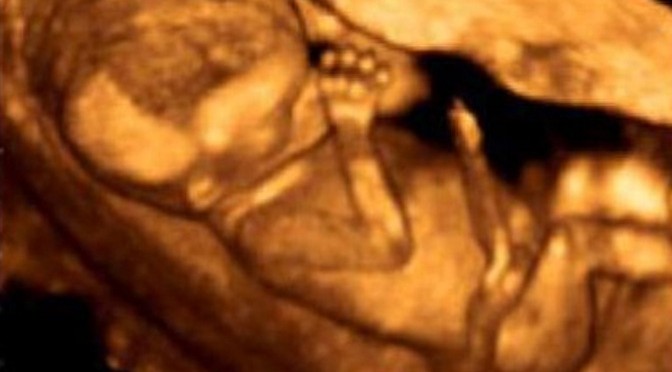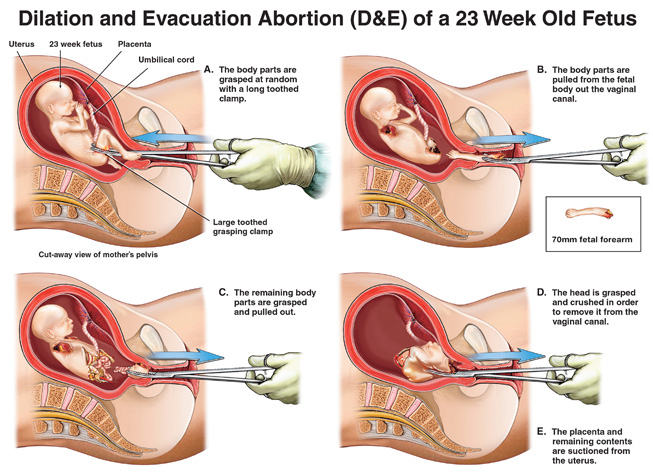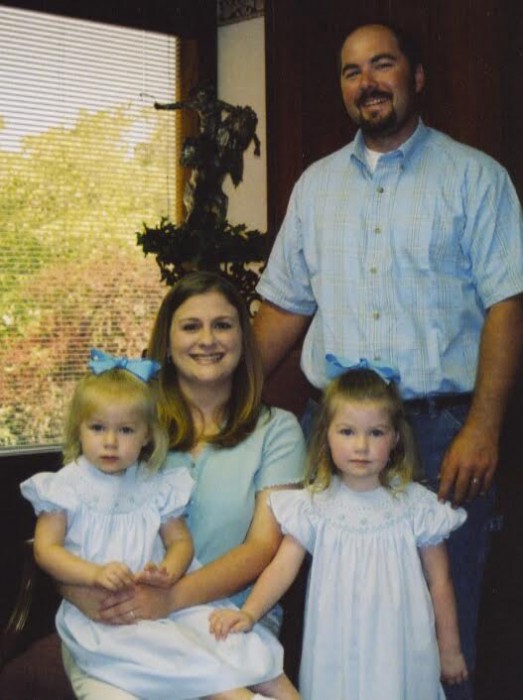Pro-abortionists use flawed study in challenging Texas pro-life law now before the Supreme Court
By Randall K. O’Bannon, Ph.D. NRL Director of Education & Research

With
the Supreme Court about to hear oral arguments in the case of a 2013
Texas pro-life law, it is no surprise to see pro-abortionists citing the
result of a study they say backs up their claims about the law’s dire
consequences, particularly about wait times to get abortions.
But the question is not whether they would contest any and all pro-life laws–of course they would.
Apropos their claims in
Whole Woman’s Health v. Hellerstedt,
the real question is do abortion clinic safety laws increase wait times
and delay abortions? Are they the cause of abortion clinic closures? Do
they drive women to pick up abortion drugs on the black market or push
women into more dangerous second trimester abortions?
These are common complaints lodged by representatives of the abortion
industry whenever clinic regulations or hospital admissions privileges
are considered or passed by state legislators. With respect to Texas and
HB 2, these claims, based on a study that appeared late last year, are
now being recycled in multiple briefs as the abortion industry makes its
case in the media and the courts.
Let’s examine that research brief, “Abortion Wait Times in Texas: The
Shrinking Capacity of Facilities and the Potential Impact of Closing
Non-ASC Clinics,” a product of the Texas Policy Evaluation Project
(TxPEP). It is being trumpeted in recent state “Truth Tours” sponsored
by the abortion industry. [1]
Are these claims true? If you take the time to study the study, you
see that it makes unwarranted assumptions and relies on flawed or
incomplete data, raising serious questions about its validity. It also
acts as if the very changes it laments had not already started long
before HB 2 was passed.
Faulty Findings
In 2013, the Texas legislature passed a series of laws, popularly
known as HB2. It protected pain capable unborn children from abortion
(never challenged by pro-abortionists), ensured that abortion clinics
meet the basic safety standards of other ambulatory surgical facilities,
and required that abortionists have hospital admission privileges at a
nearby hospital in cases of botched abortions.
Abortion activists took to the media and to the courts, complaining
that the laws were unnecessary and would close many of Texas’ clinics.
And while that played out, reliably pro-abortion academicians at the
TxPEP did their part, supposedly documenting the dire effects of the new
laws.
We have addressed and rebutted in earlier editions of the
NRL News Today
the claims of one of their research briefs, that between 100,000 and
240,000 women have self-aborted in Texas. As we noted, if there is an
increase, it is the
result of the abortion industry’s incessant promotion of chemical abortifacients, not pro-life laws.
As for this more recent study, it claims that wait times for abortion
appointments increased with passage of the law, reaching as high as 20
days at Dallas, Ft. Worth, and Austin.
Researchers for TxPEP say that if more clinics close, wait times in
those cities could increase to the point that the number of second
trimester abortions in the state would nearly double, from about 6,600
in 2013 to a projected 12,400 a year once the law reached full effect.
In the group’s press release, Daniel Grossman, one of the lead
investigators for TxPEP and one of the country’s most active abortion
researchers from the notorious abortion academy University of
California, San Francisco (UCSF), expressed his concern. “The increase
in second-trimester abortion is concerning from a public health
perspective,” said Grossman, “since later abortions, although very safe,
are associated with a higher risk of complications compared to early
abortions. Later abortion procedures are also significantly more costly
to women” (TxPEP release, 10/5/15).
The devil in the details
The TxPEP briefing goes into some detail, noting the wait times they
were given over an 11 month period (November 2014 – September 2015) when
they anonymously called one of the state’s operating abortion clinics
representing themselves as women seeking appointments for
first-trimester abortions.
Charts note fluctuations in average wait times for clinics in some of
the state’s larger cities. Houston, where Planned Parenthood has a
massive abortion megaclinic, and San Antonio, where there are three
large clinics (and Planned Parenthood is constructing a new megaclinic
of its own), saw no real increase in wait times over the study period.
Wait times in Dallas, and Ft. Worth saw increases that appeared to
correspond with the closure of one abortion clinic in Dallas and another
stopping offering abortion in Ft. Worth.
Wait times in Austin peaked, dropped, then peaked again with no
identified obvious reason. There were no charts, but wait times in El
Paso and McAllen were never more than 8 days.
TxPEP researchers claim on the basis of these numbers that wait times
would increase if clinics failing to meet the state’s new ambulatory
surgical center (ASC) standards were to close. And these increased wait
times, they project, would have the result of pushing about 5,700 women
into more dangerous second trimester abortions.
TxPEP says that there were 34 clinics open when they began making
calls and 18 when they published their results in October. Seven clinics
closed between April and July 2013, prior to the law’s July 2013
passage and the initiation of the study. Six more clinics would be
expected to close in major metropolitan areas , TxPEP claims, if
currently operating abortion clinics which are unable to meet the
state’s new ASC standards shut down.
Not so fast…
This level of detail, however, ignores some critical contexts and
masks some serious limitations in the data that call into question some
of the study’s basic conclusions.
Wait times vary, yes, over time, as old clinics close and others open
And yes, a fair amount of clinics have closed in Texas in recent years,
some perhaps in response to the new state regulations.
But note, clinics were closing before the state passed its new law,
and abortions were declining in Texas for years before the latest
mandates were passed, reducing the demand overall for Texas clinics.
TxPEP makes much of the reduction of clinics from 41 in April 2013 to
18 in October 2015. As already noted, many of those closures happened
before the law passed in July of 2013 and several of the others before
the law actually took effect (some portions became operational in
October of 2013, others not until September of 2014; different sections
of the law were enjoined and enforced over the study period as appeals
made their way through the courts).
Perhaps those closures were in anticipation of the law’s enforcement,
with the industry not wanting its clinics exposed to inspection. But
there is a simpler explanation.
In a 2006 fact sheet, Guttmacher says that there were 65 “abortion
providers” in Texas in 2000, meaning that clinics there had already
declined by more than a third before the law passed. This is part of a
larger national trend. Guttmacher found 2,918 “providers” in the U.S. in
1982, but only about 59% that many in 2011, when it found 1,720.
There are many reasons for that – the retirement of abortionists due
to age, their mounting disgust at the bloody nature of their business,
the public unpopularity of their practice, etc. But one major factor is
simply the reduction of demand. There were 1.6 million abortions
performed a year in1990. In the most recent figures from Guttmacher,
2011, there were just over 1 million.
Clinics are closing because business is drying up.
Guttmacher says there were over 110,000 abortions performed in Texas
in 1981. They had dropped by more than a third by 2011, when Guttmacher
recorded 73,200.
The loss of a caseload that large could not help but affect clinic
business. Some of the clinics that depended on abortion had to close.
Passage of the law put the spotlight on older, smaller, more dilapidated
facilities and abortionists with limited practices not connected to
their local medical communities, and this may have hastened some
closures and retirements, but these were far from the only causes.
What about the claim that such laws lead to more later abortions?
There is little evidence of any increase in 2nd or 3rd trimester
abortions in recent years, in spite of the protestations of groups like
TxPEP that new laws would push women into later abortions. According to
the U.S. Centers for Disease Control (CDC), abortions at greater than 13
weeks gestation have gone down, not up, since 1998 (probably earlier –
earlier CDC charts break gestational dates down differently), pointing
to their being fewer, not more of these later abortions since the advent
of various pro-life laws.
Unable to imagine a world without abortion
At one point, TxPEP admits that its projections on increasing wait
times are based on assuming “if demand for services remained constant…”.
In spite of the aforementioned evidence–that demand for abortion is
dropping in Texas and nationwide–TxPEP assumes for the purposes of its
study that demand will remain constant.
It never seems to occur to them that attitudes toward abortion are
changing and that, relieved of the pressure and the immediate presence
of an abortion clinic, many women have been, and will be, choosing to
let their babies live.
For example, not too long ago researchers at UCSF were citing a study
of women “turned away” from getting abortions because they were past a
given clinic’s gestational limit (clinics lacked the equipment or
abortionists with the training to handle abortions at later
developments).
While some of the women in that study ended up going elsewhere and
getting their abortions, many (despite originally being very much
inclined to abortion) made the decision to go ahead and bear their child
once their initial request was turned down.
According to that study, within a week of their being “turned away,” a
third were no longer willing to say that abortion was the right
decision. And more than eight in ten were living with the baby after
birth, with the majority reporting their relationships were “good” or
“very good” (“
Takeaways from the UCSF “Turnaway” Study, 1/9/13,
NRL News Today).
The point is that when women do wait, when they are not rushed into
an abortion that they cannot “undo,” even many of the most
“abortion-minded” change their minds.
The abortion industry and its researchers have always invested too much hope in the market remaining as it is.
The industry endures
Anyone expecting the abortion industry to happily accept its demise
is sadly mistaken. This study itself is evidence of its determination to
fight back to restore the industry to the old status quo where it
simply went about its deadly business without question or confrontation.
They obviously hope to win
Whole Woman’s Health v. Hellerstedt.
But the industry is not placing all its hopes in the judicial basket.
For some time, groups like Planned Parenthood have been shutting down
their old, small-town store front clinics. They are replaced with giant
new, high volume megaclinics, sporting not only the latest designer
colors and hues, but also built to meet state codes for ambulatory
surgical centers.
Planned Parenthood opened its 75,000 square foot Houston clinic in
2010. Planned Parenthood used the occasion of the passage of HB2 to
raise money for megaclinics being built in both San Antonio and Dallas
(Mother Jones 8/28/14).
Whole Woman’s Health, a plaintiff in the case now before the Supreme
Court, took the opportunity of the media’s presence during the
industry’s big recent Texas “Truth Tour” to show off the spacious, tidy,
decorated examination rooms of its San Antonio clinic, packed with the
latest medical equipment (
San Antonio Express-News, 2/9/16).
It was obviously part of an effort to have people forget the health
and sanitation violations at Whole Woman’s Health clinics that helped
prompt Texas legislators in the first place to pass many of the sort of
regulations the court is now considering (see
NRL News Today 4/24/13).
The implicit and sometimes explicit promotion of abortion pills and other herbal abortifacients on the black market (see
NRL News Today 9/30/14)
is also part of an strategy to try to convince elected pro-life
representatives that laws are pointless and that abortion cannot be
stopped. However the closure of clinics and the decline in the number of
abortions prior to the passage of HB2 demonstrate otherwise.
Talking up self-abortion may mean more women buy these dubious drugs
and are exposed to serious health threats, but nothing seen thus far
seems to show this happening on a scale sufficient to spawn a large new
underground abortion economy (see
NRL News Today 11/20/15).
Pro-lifers who have been around a while have learned to expect to see
the abortion industry trot out pro-abortion academics predicting public
health catastrophes whenever a new pro-life law protecting mothers or
their unborn children has passed. This is clearly the case with this
latest study from TxPEP.
But in Texas, as we have seen elsewhere, the real effect of these
laws has been to see more lives saved, and more mothers spared the agony
of abortion.
Source: NRLC News








 Doctors
at the Groningen University Medical Center commit infanticide. If a
baby is born with serious disabilities–and the death doctors conclude
they will have an “unlivable life”–the baby’s fate is often to be on the
receiving end of a lethal injection.
Doctors
at the Groningen University Medical Center commit infanticide. If a
baby is born with serious disabilities–and the death doctors conclude
they will have an “unlivable life”–the baby’s fate is often to be on the
receiving end of a lethal injection. Am I lucky, or what? My family lives in Virginia and POLITICO is reporting that the cash-drenched
Am I lucky, or what? My family lives in Virginia and POLITICO is reporting that the cash-drenched 




 With
the Supreme Court about to hear oral arguments in the case of a 2013
Texas pro-life law, it is no surprise to see pro-abortionists citing the
result of a study they say backs up their claims about the law’s dire
consequences, particularly about wait times to get abortions.
With
the Supreme Court about to hear oral arguments in the case of a 2013
Texas pro-life law, it is no surprise to see pro-abortionists citing the
result of a study they say backs up their claims about the law’s dire
consequences, particularly about wait times to get abortions.
 ·
Requiring a professional mental health evaluation would “unnecessarily
slow down” patient’s access to physician assisted suicide.
·
Requiring a professional mental health evaluation would “unnecessarily
slow down” patient’s access to physician assisted suicide.
 That
abortion clinics are closing is not really news. They have been closing
for years, for reasons we have explained at great length at NRL News and NRL News Today.
That
abortion clinics are closing is not really news. They have been closing
for years, for reasons we have explained at great length at NRL News and NRL News Today. As promised, NRL News Today is running at least an article a day about Whole Woman’s Health v. Hellerstedt
as we come up on March 2, the day the Supreme Court will hear oral
arguments in this challenge to two parts of Texas’ 2013 pro-life HB2.
As promised, NRL News Today is running at least an article a day about Whole Woman’s Health v. Hellerstedt
as we come up on March 2, the day the Supreme Court will hear oral
arguments in this challenge to two parts of Texas’ 2013 pro-life HB2.

 There
are three words that no mother ever expects or wants to hear from their
young teenage daughter. The words, “Mom, I’m pregnant,” were spoken to
me by my middle daughter when she was just 15 years old.
There
are three words that no mother ever expects or wants to hear from their
young teenage daughter. The words, “Mom, I’m pregnant,” were spoken to
me by my middle daughter when she was just 15 years old.






